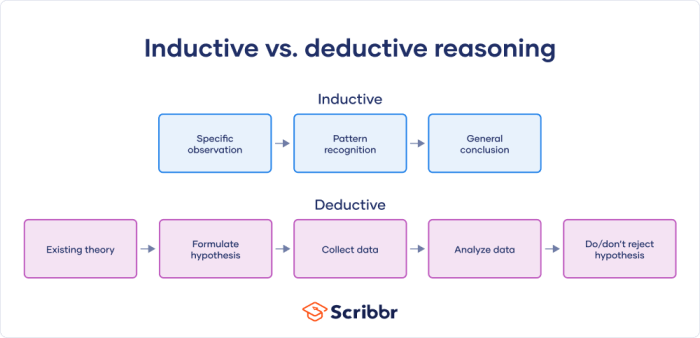The researcher’s failure to protect research subjects from deductive disclosure poses significant ethical and legal challenges. Deductive disclosure occurs when an individual’s identity or sensitive information can be inferred from seemingly anonymized data. This article examines the researcher’s responsibility to prevent deductive disclosure, explores various methods for minimizing its risk, and discusses best practices for protecting research subjects.
The consequences of deductive disclosure can be severe, including privacy violations, discrimination, and even physical harm. Researchers must be aware of the potential risks and take appropriate measures to mitigate them.
Ethical and Legal Considerations

Researchers have an ethical and legal responsibility to protect research subjects from deductive disclosure, which occurs when an individual can be identified through the combination of multiple pieces of information that are not individually identifiable. Deductive disclosure can have serious consequences for research subjects, including privacy breaches, discrimination, and even physical harm.
The legal frameworks that govern the protection of research subjects include the Belmont Report, the Common Rule, and HIPAA. These frameworks require researchers to obtain informed consent from research subjects, to protect the confidentiality of research data, and to minimize the risks of harm to research subjects.
Methods for Minimizing Deductive Disclosure

There are a number of methods that researchers can use to minimize the risk of deductive disclosure, including:
- De-identification:This involves removing or modifying personal identifiers from research data, such as names, addresses, and Social Security numbers.
- Data encryption:This involves encrypting research data so that it cannot be accessed by unauthorized individuals.
- Limited data collection:This involves collecting only the data that is necessary for the research project and avoiding the collection of sensitive information that could be used to identify research subjects.
Each of these methods has its own advantages and disadvantages. De-identification is a relatively simple and inexpensive method, but it can be difficult to completely remove all personal identifiers from research data. Data encryption is a more secure method, but it can be more expensive and time-consuming.
Limited data collection is the most effective method for minimizing the risk of deductive disclosure, but it can limit the scope of the research project.
Case Studies and Best Practices: The Researcher’s Failure To Protect Research Subjects From Deductive Disclosure
There have been a number of cases of deductive disclosure in research projects. One well-known case is the Netflix Prize, which was a competition to develop a better algorithm for predicting user ratings of movies. The winning team used a combination of public data and data from Netflix to develop their algorithm.
However, they were able to identify a number of Netflix users by combining the data from the two sources.
This case highlights the importance of using de-identification and other methods to minimize the risk of deductive disclosure. Researchers should also be aware of the potential consequences of deductive disclosure and should take steps to protect research subjects from harm.
Future Directions and Recommendations

There are a number of emerging technologies and trends that may impact the protection of research subjects from deductive disclosure. One such technology is artificial intelligence (AI). AI can be used to identify patterns in data that humans may not be able to see.
This could make it easier to identify research subjects even if their data has been de-identified.
Another trend is the increasing use of social media. Social media data can be used to identify individuals and to track their movements. This could make it easier for researchers to deductively disclose research subjects even if they have not collected any data from them directly.
In light of these emerging technologies and trends, it is important for researchers to be aware of the risks of deductive disclosure and to take steps to protect research subjects from harm. Researchers should also work with ethicists and policymakers to develop new frameworks for protecting research subjects in the digital age.
Query Resolution
What is deductive disclosure?
Deductive disclosure occurs when an individual’s identity or sensitive information can be inferred from seemingly anonymized data.
What are the consequences of deductive disclosure?
The consequences of deductive disclosure can be severe, including privacy violations, discrimination, and even physical harm.
What are the researcher’s responsibilities in preventing deductive disclosure?
Researchers have a responsibility to protect the privacy of their research subjects and to take appropriate measures to prevent deductive disclosure.
What methods can be used to minimize the risk of deductive disclosure?
Various methods can be used to minimize the risk of deductive disclosure, such as de-identification, data encryption, and limited data collection.